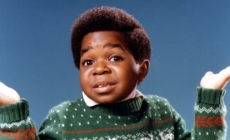-
Deandre Ayton On Criticism After Joining The Lakers: ‘It Fuels Me’ - 19 mins ago
-
French police and judges raid far-right National Rally party HQ - 23 mins ago
-
Over 140 Environmentally Friendly Buses Coming to Budapest - 23 mins ago
-
America Could Get Its First New National Park in Years: What to Know - 38 mins ago
-
Gary Coleman’s ex-wife failed a polygraph test about the late actor’s 2010 fall - 40 mins ago
-
Rockies vs. Red Sox Highlights | MLB on FOX - about 1 hour ago
-
Trump Assassination Attempt Suspect Makes Bold Legal Move - about 1 hour ago
-
Sean ‘Diddy’ Combs juror speaks out on prosecution’s RICO case against rapper - about 1 hour ago
-
Hungarian Opera and Ballet Return to Dubai with Exclusive Season Opener - about 1 hour ago
-
Dodgers vs. Brewers Highlights | MLB on FOX - 2 hours ago
Debut novel is a sit-up-and-take-notice effort
Chester Himes was convicted of armed robbery at the age of 19 in 1928 and sentenced to 20- to 25-years hard labour in Ohio State Penitentiary. He ordered a Remington typewriter and began to write, developing his craft. He was paroled in 1936 after serving almost eight years, with prison officials citing his writing and voracious reading as proof he had reformed.
From his cell Himes had tapped out articles and stories that were printed in local, then national newspapers and magazines. Eight stories were published in the African-American periodicals Abbott’s Monthly, of Chicago, and Atlanta Daily World. He had also broken into the major league with four stories about prison life in the prestigious Esquire magazine.
This latter success made him one of Esquire’s most popular writers and really sparked his literary career, especially after he wrote a searing and emotional account of a fire in the Ohio lockup in 1930 that killed 320 prisoners, still the deadliest prison fire in American history. Himes saw inmates who were guilty of horrible crimes bravely trying to save one another.
This much seems to be fairly clear in standard accounts of the life of Chester Bomar Himes, born on July 29, 1909 in Jefferson City, Missouri. His parents were both educators, his professor father teaching industrial trades at historically black colleges, and his mother a teacher who left to raise her sons, Chester and two older brothers. The family frequently moved around the United States whenever his father got new teaching jobs.
Biographies about Himes seem to agree that the Himes were middle class, but despite the apparent benefits of a stable, somewhat privileged home, Chester’s early years were marked by tragedy and trauma. His parents had a volatile relationship and divorced when he was a teen. One brother remained permanently blind after a hospital refused him treatment for a bad chemical accident that had temporarily blinded him. The whole family cried and pleaded for help but the doctors refused because of Jim Crow laws, and not least human cruelty.
Also, the teenage Chester fell down an elevator shaft at the hotel where he worked in Ohio, badly damaging his back and spine. He spent months in a full body cast before learning how to walk again. Even after the bones were reset and the bruises gone, he had chronic pain.
Troubles aside, he managed to enrol at Ohio State University but was expelled in his first year because of a prank that reportedly involved pimps and prostitutes. By now he was drinking a lot, to dull the physical pain caused by his accident and the psychic pain that came from being a black child in early 20th-century racist America. Slavery had ended but…
After university he turned to crime, mostly robbing people and working in illegal gambling dens. He was arrested more than once and after being caught for the armed robbery went to the inhumane Ohio penitentiary. With release came the difficulties of being black and wanting to be a writer in post-depression America. For instance, a humiliating stint as a Hollywood scriptwriter ended in his being fired on racial grounds.
As he wrote later, he felt he had survived undamaged the earlier disasters in his life but “under the mental corrosion of race prejudice in Los Angeles I became bitter and saturated with hate”. Still, he found himself embraced and befriended by many in the black literati.
His first novel, “If He Hollers Let Him Go”, was published in 1945 and now receives a fresh reissue. It’s a tremendous read and you’d have to think that anyone lucky enough to discover it back then would surely have wanted to go on and read more Himes.
He died in 1984 aged 75 with some 20 books behind him and these days is considered as one of the best black crime writers America has produced. An inescapable theme is his experiences dealing with the everyday subjugation encountered by African-Americans, and “If He Hollers Let Him Go” for one lays it bare unrelentingly on page after page.
The segregationist Jim Crow laws did not end until 1965. In the early 1950s Himes settled permanently in France, which he liked in part due to his popularity in literary circles. Black lives may matter more, though not fully, in the 21st century, but in Himes’ time and telling they barely mattered at all. While no one was actually getting lynched as strange fruit hanging from poplar trees in Los Angeles, this is racism in the raw; black deeds committed by whites with black hearts against black skins.
The protagonist, Bob Jones, had two years of college but then left Cleveland because he kept losing out on jobs while white boys were hired from the line behind him. Then in LA practically the only work for a Negro was service in white folks’ kitchens. It wasn’t that so much, it was the look on faces when you asked about a job: “Most of ’em didn’t say right out they wouldn’t hire me. They just looked so goddamned startled that I’d even asked. As if some friendly dog had come in through the door and said, ’I can talk’. It shook me.”
When he does find a job as a shipyard worker during the Second World War it is because there aren’t enough whites. He’s a nigger, a coon, a Rufus. “We’re a wonderful goddamned race, I thought. Simple-minded, generous, sympathetic sons of bitches. We’re sorry for everybody but ourselves; the worse the white folks treat us the more we love ’em.”
Jones is a leaderman in charge of a coloured gang of 12 men and three women. He can always feel race trouble, serious trouble, never more than two feet off. He’s tensed every moment to spring. All he wants is for the white folks to let him alone; not say anything to him, not even look. They can take the goddamned world and go to hell with it.
Otherwise he has the same cold hatred for whites that they have for him. Once a day he has an urge to tell them to shove the job. The thing he’d like most in the world is “to push my Buick Roadmaster over some peckerwood’s face”.
Pressure comes from his girl, Alice, too. She’s light-skinned and classy but wants him to study at night so he can return to college after the war and study law. Her attitude is, “You mustn’t think in terms of getting even with them, you must accept whatever they do for you and try to prove yourself worthy to be entrusted with more”.
Alice illustrates how, just like anyone else, blacks can be wary of each other, in her case because of her skin tone, which makes some people think she might even by white. And what’s to stop blacks looking down on Mexicans or Jews or commies?
Jones’ downfall begins when he tangles with Madge, a peroxide blonde, at work. She calls him a nigger. He calls her a cracker bitch. “She looked thirty and well sexed, rife but not quite rotten. She looked as if she might have worked half those years in a cat house, and if she hadn’t she must have given a lot of it away.” As a result, he is downgraded to mechanic.
After a bust-up with another white worker, a man who king-hits him, Johns turns murderous. He’d kill him even if he is hanged for it. “A white man, a supreme being. Just the thought of it did something for me; just contemplating it. ” Later he relents. He can’t kill every white.
“If He Hollers Let Him Go” reflects Himes’ own oppression as a black man, a nigger. The book is a powerful message board for his and others’ bitterness, but the plot and characters are strong enough to rise above the rancor. The ending is explosive but satisfying in that it provides as much of a let-off as Jones can be given, and despite the hate and violence he displays, in these prejudiced circumstances he has surely earned readers’ sympathy.
Here is a gratifying entry by Chester Himes.
Source link






























